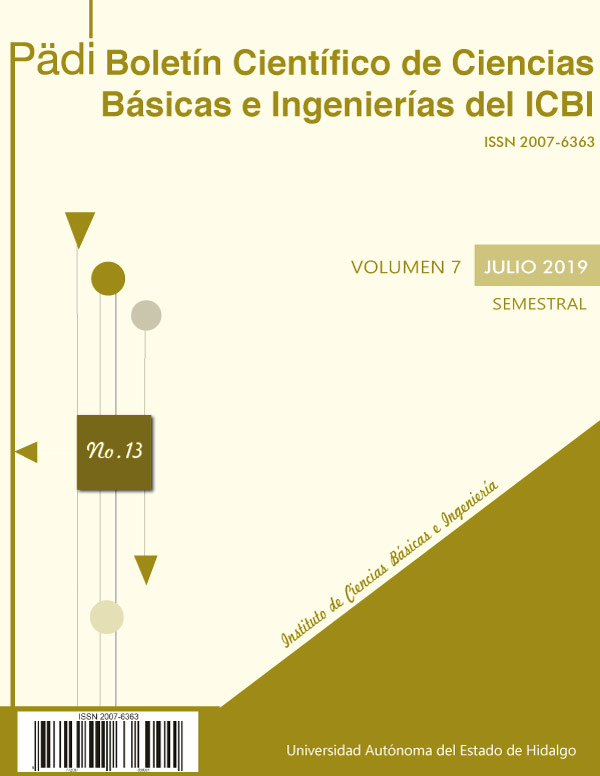Anthropic activities: deterioration of the stratospheric ozone layer
Deterioration of the stratospheric ozone layer
Abstract
The ozone in the stratosphere forms a very important atmospheric layer that helps the preservation of life on Earth, since without its presence the UV-C rays would reach directly to the population, generating different health problems to living beings. Scientific literature mention that the ozone layer has entered a phase of deterioration due to the presence of compounds derived from saturated hydrocarbons such as chlorofluorocarbons (CFC´s). Due to the growing concern of the scientific community, studies have been increased in order to understand the behavior or deterioration of the ozone layer, and to propose mitigation measures to stop this phenomenon. The objective of this work was to make a bibliographical review of the current state of deterioration of the ozone layer, and to know the possible causes and consequences of the same, also to raise awareness about the use of compounds that contribute to the deterioration of this layer.
Downloads
References
Baird, C y Cann, M., (2012), Química ambiental, Barcelona, España: Reverté, S. A.
Ball, W., Alsing, J., Mortlock, D., Staehelin, J., Halgh, J., Peter, T., Tummon, F., Stubi, R., Stenke, A., Anderson, J.,
Bourassa, A., Davis, S. M., Degenstein, D., Frith, S., Froidevaux, L., Roth, C., Sofieva, V., Wang, R., Wild, J., Yu, P., Ziemke, J. R. y Rozanov, E. V. (2018). Evidence for a continous decline in lower stratospheric ozone offsertting ozone layer recovery. Atmospheric chemistry and physics, 1(18), 1379-1394.
Chen, S. B., Zhao, L. y Tao, Y. L. (2017). Stratospheric ozone change over the Tibetan Plateau. Atmospheric Pollution Research, 8(2017), 528-534.
Denton, M. H., Kivi, R., Ulich, T., Rodger, C.J., Cliverd, M. A., Horne, R. B. y Kavanagh, A. J. (2017). Solar proton events and stratospheric ozone depletion over northern Finland. Journal of Atmospheric and Solar-Terrestrial Physics, 30(2017), 1-10.
Duan, H., Miller, T. R., Liu, G., Zeng, X., Yu, K., Huang, Q., Zuo, J., Qin, Y. y Li, J. (2018). Chilling prospect: Climate change effects of mismanaged refrigerants in China. Enviromental science y technology, (52), 6350-6356.
Gonzalez, J. C. y Salamanca, J. (2011) Absorción por ozono y dispersión por aire de la radiación solar ultravioleta B. Revista U.D.C.A Actualidad y divulgación científica, 14(12), 151-159.
Guerra, A. (2018). Indicaciones y aplicaciones de la fotoprotección. Protocolos de práctica asistencial, 12(47), 2811-2814.
Guerra, J. C., Rodríguez, Arencibia, M. T. y Crespillo, M. (2003). El ozono superficial y su papel en el sistema atmosférico. Información tecnológica, 14(2), 3-12.
Manahan, S. (2010). Environmental Chemistry. Boca Raton: CRC Press.
Palomar, F. (2011). ¿El cambio climático afectará a la piel?. Formación dermatológica, 1(13-14), 8-15.
Rivas, M., Leiva, C. y Rojas, E. (2011). Estudios de series temporales de energía solar UV-B de 305 nm y espesor de la capa de zono estratosférico en Arica, norte de Chile. Ingeniare, (19)2, 168-173.
Rojas, E. y Rivas, M. (2017). Índice solar ultravioleta y espesor de la capa de ozono en Arica norte de Chile. Interciencia, 42(2), 115-118.
Manning, W. J. y Tiedemann, A. 1995. Climate change: Potential effects of increased atmospheric Carbon dioxide (CO2), ozone (O3), and ultraviolet-B (UV-B) radiation on plant diseases. Evironmental Pollution, 88 (2) 219-245. https://doi.org/10.1016/0269-7491(95)91446-R.
Salomon, S., Ivy, D. J., Kinnison, D., Mills, M. J., Neely III, R. R. y Schmidt, A. (2018). Emergence of healing in the Antartic ozone layer. Science, 353(1), 269-274.
San Juan, Y.I., Gómez D., A.L. y Romero R., F.I. (2017). Sistema de gestión de inventario de sustancias agotadoras de la capa de ozono. Tecnura, 21(54), 59-67.
Sánchez, M. V. (2008). La capa de ozono. Biocenosis, 21(1-2), 65-68.
Viñegla, B, y López-Figueroa, F. (2009). Efecto de la radiación UV solar y artificial sobre la fotosíntesis y la actividad anhidrasa carbónica en macroalgas intermareales del sur de España. Ciencias marinas, 35(1), 59-74. Recuperado en 15 de octubre de 2018, de http://www.scielo.org.mx/scielo.php?script=sci_arttext&pid=S0185-38802009000100005&lng=es&tlng=es.














